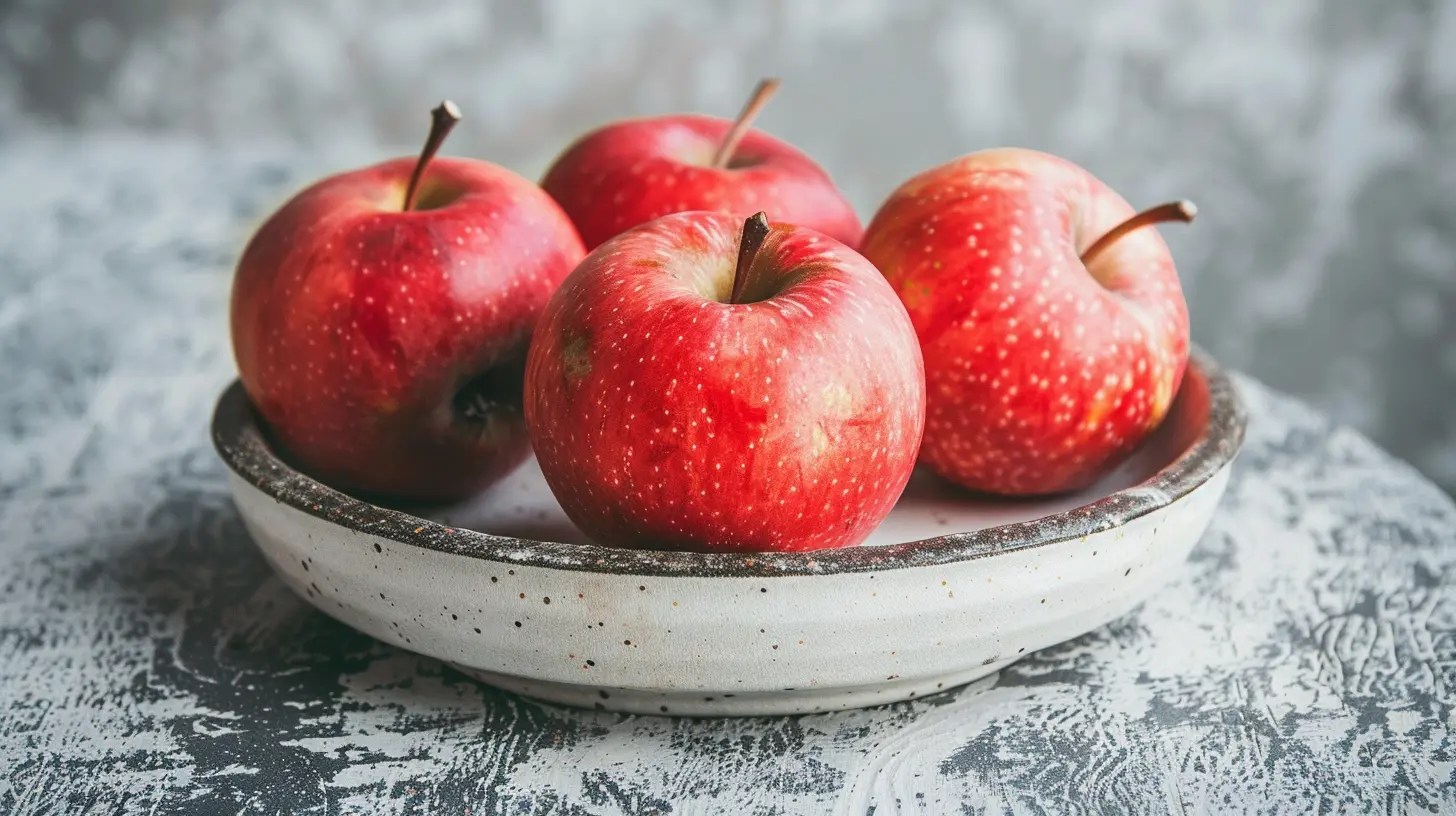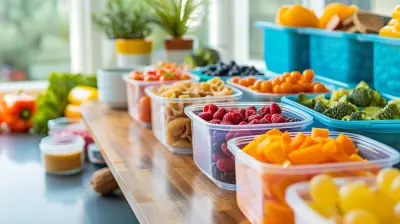Healthy Weight Gain for Growing Kids: A Nutritionist's Perspective
6 October 2025
Raising kids is a whirlwind of joys, challenges, and a never-ending list of questions. One that often leaves parents scratching their heads? “Why is my child so skinny—should I be worried?” If that sounds familiar, you’re not alone. While everyone’s talking about childhood obesity, there’s another side of the coin we rarely hear about: helping kids gain weight in a healthy, sustainable way.
Let’s be clear—this isn’t about pushing junk food or overfeeding your child. It’s about giving their growing bodies the nutrients and energy they need to thrive. So, let’s dive into this topic from a nutritionist’s point of view and break down exactly how you can support healthy weight gain for your little one.
Why Do Some Kids Struggle to Gain Weight?
Every child grows at their own pace, but when a child consistently falls below expected growth milestones—especially weight—it’s natural to worry. There are lots of reasons a child might be underweight:- High metabolism: Some kids just burn calories like wildfire.
- Picky eating: Let’s face it—getting toddlers to eat broccoli is already a struggle.
- Food allergies or intolerances: These can limit what a child can safely eat.
- Medical conditions: Digestive issues, thyroid problems, or metabolic disorders can play a role.
- Emotional stress: Yup, stress can show up as appetite loss even in young kids.
Before hitting the pantry for a calorie hike, always check in with your pediatrician. Ruling out any underlying health issue should be step one.
What Does “Healthy Weight Gain” Even Mean?
“Just feed them more!” might sound like logical advice, but that’s not quite right. Healthy weight gain isn’t about just packing on pounds—it’s about building muscle, supporting proper development, and giving your kid the fuel their body needs, without relying on sugar-laden, empty-calorie foods.Think of it like building a house: You don’t want to stack bricks on sand. You want a solid foundation—and that comes from nutrient-dense foods, not just eating more cookies and fries.
Calorie-Rich Doesn’t Mean Junk Food
So, how do you help your child gain weight without turning to greasy fast food? It’s all about choosing calorie-dense but nutrient-rich foods.Here are some examples of all-stars that pack a punch:
- Nut butters (peanut, almond, cashew): Great on toast, in smoothies, or straight from the spoon.
- Avocados: Loaded with healthy fats—perfect for sandwiches, salads, or even mashed for dipping.
- Full-fat dairy: Think whole milk, cheese, yogurt—it’s all fair game.
- Eggs: Scrambled, hard-boiled, or hidden in muffins—they’re a perfect protein source.
- Oats: Great for breakfast and can be jazzed up in a ton of ways.
- Olive oil & coconut oil: Drizzle on veggies or use for cooking to sneak in extra calories.
Keep these in your regular rotation to support both growth and overall health.
The Magic of Meal Frequency
You know how some kids seem to graze all day? That’s actually a trick we can use to their advantage. Instead of 3 big meals, try aiming for 5–6 smaller meals or snacks throughout the day.Why? Because little tummies can’t always handle big portions. Frequent eating ensures they get consistent nutrition without feeling overwhelmed.
Here’s a sample eating schedule:
- Breakfast
- Mid-morning snack
- Lunch
- Afternoon snack
- Dinner
- Evening snack (optional)
Every meal is a chance to nourish. Don’t waste it on empty calories—make every bite count.
Sneaky Ways to Boost Calories (Without Making Kids Notice)
Alright, let’s talk about some stealthy mom/dad ninja moves. You can sneak extra calories into your child’s food without changing the taste or texture too much.Here are a few simple upgrades:
- Add a tablespoon of peanut butter to smoothies, oatmeal, or waffles.
- Stir powdered milk or formula into regular milk (ask your pediatrician first).
- Toss shredded cheese into scrambled eggs or pasta.
- Use Greek yogurt instead of regular yogurt—it’s creamier and more calorie-rich.
- Cook with healthy oils generously—don’t skimp.
These hacks may seem small, but over time, they add up big time.
Protein: The Secret Growth Ingredient
You can’t talk healthy weight gain without giving a shout-out to protein. It’s the building block for muscle growth, tissue repair, and pretty much everything a growing body needs.Aim to include a protein source in every meal and snack. Some great child-friendly choices include:
- Chicken or turkey slices
- Ground beef or meatballs
- Tofu or tempeh (yep, even for meat lovers!)
- Eggs (again—they’re just so versatile!)
- Beans and lentils
- Cheese sticks or cottage cheese
Pro tip: Double up on protein at dinner with a side of beans and a meat main dish.
Don’t Forget Carbs and Healthy Fats
Protein’s crucial—but carbs and fats are your energy MVPs.🤓 Think of carbs like the fuel in your car’s tank. They give your child the energy to run, play, and (hopefully) nap.
Focus on complex carbs:
- Whole-grain bread and pasta
- Brown rice
- Sweet potatoes
- Quinoa
As for fats, they’re often misunderstood. But healthy fats are essential for brain development and overall health.
Include:
- Nut butters
- Olive oil
- Coconut oil
- Whole milk products
- Fatty fish (like salmon)
Balance is everything. A good mix of all three macronutrients—carbs, protein, and fats—at each meal lays the perfect groundwork for healthy growth.
Hydration Matters (But Smartly)
Here’s something most parents miss: drinking too much water, juice, or milk right before meals can actually reduce hunger. Crazy, right?Encourage your child to sip water throughout the day but limit liquid intake 30 minutes before meals. That way, they’re more likely to have an appetite when real food hits the table.
And when they do drink…
- Choose whole milk over skim.
- Skip sugary sodas.
- Limit juice to 4–6 oz/day—100% fruit juice only.
- Try smoothies packed with bananas, berries, oats, and full-fat yogurt.
The Role of Routine and Lifestyle
Kids thrive on routine—it’s like their personal rulebook for the day. And when it comes to eating, having set mealtimes helps regulate appetite and digestion.Other helpful habits?
- Make mealtimes screen-free: It helps kids focus on eating.
- Encourage movement: Physical activity can build appetite and muscle.
- Be patient: Don’t force-feed. That can backfire big time.
- Make food fun: Let your child choose between healthy options, play with cookie cutters, or decorate their plate.
Remember, weight gain is a process—not a race.
When to Consider Supplements
If your child is extremely underweight or has a limited diet (due to allergies, extreme pickiness, or medical issues), a pediatrician may recommend supplements.These could include:
- A multivitamin tailored for kids
- Liquid calorie or protein supplements like PediaSure
- Probiotics for gut health
- Omega-3s for brain function
But always—yes, always—consult your doctor before giving your child any supplement.
The Emotional Side of Eating
Sometimes, the issue isn’t the food—it’s the feelings around it. If your child gets anxious around meals or has a negative relationship with food, it could create long-term struggles.Tips to foster a positive food environment:
- Don’t use food as a reward or punishment.
- Avoid labeling foods as “bad” or “fattening.”
- Eat together as a family as often as possible.
- Praise effort (trying a new bite), not the amount eaten.
Because let’s face it—eating is more than just chewing and swallowing. It’s emotional, cultural, and deeply personal—even for kids.
Final Thoughts: It’s a Journey, Not a Quick Fix
Helping your child gain weight in a healthy way takes time, patience, and a little creativity. And while it might feel frustrating at times, remember this: you’re doing better than you think.Focus on progress—those extra bites, new flavors tried, or a second helping at lunch. Over time, these small wins turn into big gains (literally!).
As a parent, your role is to offer balanced, wholesome choices and create a positive environment around food. Your child’s body will do the rest. Trust it—and trust yourself.
all images in this post were generated using AI tools
Category:
Childrens HealthAuthor:

Tara Henson
Discussion
rate this article
1 comments
Isla Anderson
Great insights on healthy weight gain! Incorporating a variety of nutrient-dense foods and balancing meals can really support our kids' growth. Thanks for sharing practical tips that make nutrition easier for parents!
October 19, 2025 at 3:39 PM


